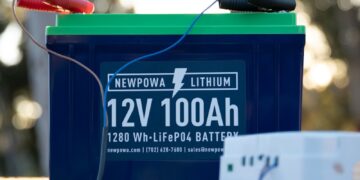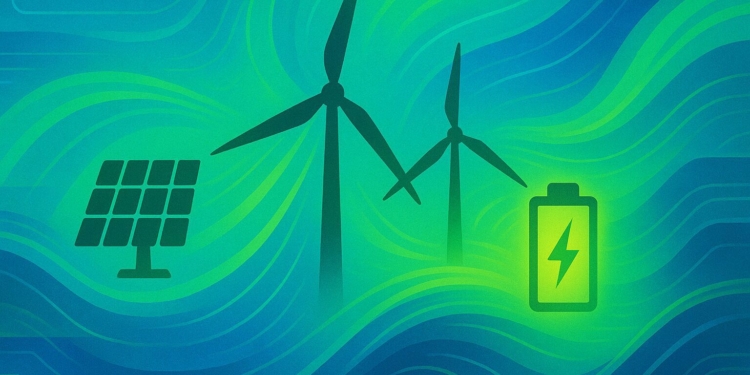Enough is enough. America’s biggest energy hogs—steel mills, manufacturers, chemical plants—are acting downright stupid, bleeding cash and choking the planet with dirty energy. You’ve got multiple facilities across the U.S., guzzling coal, gas, and grid power like there’s no tomorrow, and one pathetic, token “small system” at a single site? That’s not progress—it’s a lazy, half-hearted PR stunt. CFOs and board members, this is your wake-up call: you’re flushing millions down the drain, ignoring savings, and failing your shareholders, employees, and the Earth. This is a harsh reality check—stop being idiots, step up, and take action now.
The Dirty Truth: You’re Energy Hogs and Proud of It
You’re the worst offenders—massive industries burning through energy like it’s 1980. Steel, cement, manufacturing, and chemical giants, listen up:
- Steel Titans: Companies like U.S. Steel and Nucor run sprawling plants in Pennsylvania, Indiana, and Ohio, blasting furnaces with coal and gas. You’re sucking down 20-25 kWh per kilogram of steel, costing 15-20% of your budget—hundreds of millions yearly, per the EIA. Filthy, expensive, and dumb.
- Manufacturers: Ford, GM, and heavy machinery makers, your assembly lines and factories in Michigan, Tennessee, and beyond devour gigawatt-hours. One GM plant burns enough power for 50,000 homes, mostly from dirty sources. Why? Because you’re too spineless to change.
- Chemical Beasts: Dow Chemical, ExxonMobil—your Texas and Louisiana refineries and plants guzzle gas and electricity, spending billions while pumping out 30% of U.S. industrial emissions. You’re killing the planet and your profits.
And your “effort”? One measly 1 MW solar array or a tiny wind turbine at a single site out of dozens—say, a GM plant in Ohio or a Dow facility in Texas—while your other 10, 20, 30 locations choke on coal and gas. That’s not a strategy; it’s a joke. You pat yourselves on the back, call it “sustainability,” and keep hogging energy. Shame on you.
The Cost of Stupidity: Bleeding Cash, Killing the Future
You’re not just dirty—you’re reckless with money. Industrial power rates hit 7.5 cents per kWh nationally, climbing to 15-20 cents in states like California and New York (EIA, 2024). A single 100,000 MWh facility costs you $7.5 million to $20 million a year. Multiply that by 10 or 20 sites—do the math, CFOs. You’re torching hundreds of millions. Gas and coal prices swing wildly—$8 per MMBtu for gas in 2024—while you ignore stable, cheaper alternatives.
Then there’s the damage: 30% of U.S. greenhouse gases come from you, per the EIA. Regulations are coming—EPA’s 2030 carbon rules will slap you with fines, and customers are ditching dirty brands. Your one piddly “green” system—maybe a 500 kW solar panel at a Tennessee plant—covers 1% of your needs while 95% of your energy stays filthy. Boards, you’re asleep at the wheel. CFOs, you’re failing at your one job: fiscal responsibility.
No Excuse: One Tiny System Isn’t Enough
Got 15 plants across the U.S.—Ohio, Texas, Pennsylvania, California—and one has a baby solar setup or a token windmill? That’s pathetic. A 1 MW system at your Michigan factory powers what—a few lights? Meanwhile, your other sites in Illinois, Georgia, and Alabama burn coal and gas, racking up bills and emissions. You’ve got the cash, the land, the rooftops—yet you cling to dirty energy like fools.
- Example: A steelmaker runs 12 plants, one in Kentucky with a 2 MW solar array—cute. The other 11? Gas-guzzling dinosaurs, costing $50 million a year combined. That’s not a plan; it’s a disgrace.
- Example: A manufacturer with 20 sites—California, Nevada, you name it—brags about a 500 kW system in Arizona. The rest? Grid-dependent, dirty, and overpriced. Wake up.
No state’s an excuse. California’s sun begs for solar. Midwest wind is cheap. Everywhere, batteries store power to kill peak rates. One token system while the rest lag? That’s laziness, pure and simple.
The Fix Is Obvious: Stop Being Dumb
You don’t need a PhD to see the solution. Energy costs are climbing, emissions are a liability, and tech’s ready. Here’s how to quit being stupid:
- Scale Up Renewables: A 10 MW solar farm or wind array per site slashes bills by 20-30%. A $10 million install saves millions over time. Multiply that across your 15 plants—savings in the tens of millions.
- Add Batteries: Store cheap power, use it at night or during peaks. Tesla Powerpacks or similar cut grid reliance. One 5 MWh system saves $500,000 a year per site.
- Audit Every Facility: Your 20 locations—check energy use, map rooftops, and act. One tiny system won’t cut it when you’re burning 1,000 MW across the U.S.
- Cut the Dirt: Coal and gas are volatile and toxic. Renewables lock in low rates—3-5 cents per kWh—saving millions long-term.
Companies like Ball Corporation aren’t clueless—they’ve got solar and wind at multiple sites, cutting 25% of energy costs. Nucor’s testing renewables across plants, not just one. Quit hiding behind a single, sad setup.
CFOs and Boards: Your Jobs Are on the Line
CFOs, your role is to save money, not torch it. Boards, you’re here to steer the ship, not sink it. You’re ignoring savings, risking fines, and losing customers to smarter rivals. One baby system at one site while your other factories hog energy? That’s not leadership—it’s negligence. Shareholders see the bills. Employees see the smoke. The public sees your failure.
- Fact: A 20-site manufacturer could save $50 million a year with renewables across all locations.
- Fact: Emissions cuts dodge carbon taxes and boost your brand—customers hate dirty hogs.
Action, Now: Enough Is Enough
Stop the nonsense. You’ve got multiple plants—Ohio, Texas, California, everywhere—sucking power and cash. One tiny system doesn’t make you green; it makes you a poser. CFOs, run the numbers—millions are slipping away. Boards, demand change—your legacy’s at stake.
- Step 1: Audit all sites. How much power? How much waste? Get real data.
- Step 2: Plan big. 10 MW solar, 5 MWh batteries—per site, not just one.
- Step 3: Hire experts. Firms like Pacifico Energy have solutions for every plant.
- Link: Pacifico Energy
- Step 4: Act fast. Costs rise, regs tighten—move before you’re screwed.
- Step 5: Show it. Tell the world—LinkedIn, reports—your whole network’s going clean.
Dirty energy hogs, your time’s up. Stop being stupid. No more token systems while your other sites choke the grid. CFOs, boards—step up, save cash, save the planet. Enough is enough. Post this, tag your industry, and demand action: Why are you still a hog? What’s your next move? Act now, or get left behind.
Action Plan for Industrial Energy Transformation
The Problem: Wasteful, Dirty Energy Use
- Massive Consumption: Steel, manufacturing, and chemical plants burn 20-25 kWh per kg of steel, gigawatt-hours for assembly lines, and billions in gas and power—30% of U.S. industrial emissions (EIA, 2024).
- Token Efforts: One 1-2 MW solar or wind system at a single site (e.g., a GM plant in Ohio, a Dow facility in Texas) while 10-20 other locations guzzle coal and gas.
- Financial Bleed: Power costs $7.5M-$20M per 100,000 MWh facility; multiply by 10-20 sites—hundreds of millions wasted yearly at 7.5-20 cents/kWh (EIA, 2024).
- Risks: EPA 2030 carbon rules, volatile gas prices ($8/MMBtu), and customer backlash threaten profits and reputation.
The Solution: Scale Up, Clean Up, Save Big
Step 1: Audit All Sites
- Goal: Map energy use and waste across every facility.
- Action:
- Measure: Track MWh, fuel type (coal, gas, grid), and costs for all 10-20 sites—Ohio, Texas, California, etc.
- Assess: Check rooftops, land for solar/wind potential; note peak demand.
- Tools: Hire energy auditors or use software like Schneider Electric’s EcoStruxure.
- Timeline: 1-2 months per site.
- Outcome: Real data to drive decisions—e.g., a 100,000 MWh plant in PA wasting $10M/year.
Step 2: Plan Big—Renewables and Storage
- Goal: Slash costs and emissions with serious systems, not tokens.
- Action:
- Solar: Install 10 MW solar farms per site—cuts 20-30% of bills (3-5 cents/kWh vs. 7.5-20 cents).
- Cost: ~$10M per install, pays back in 5-7 years.
- Fit: Rooftops in CA, open land in TX—everywhere works.
- Wind: Add 10 MW turbines where viable (Midwest, e.g., IL, IN)—cheap, stable power.
- Batteries: Deploy 5 MWh storage (e.g., Tesla Powerpacks) per site—store cheap solar/wind, dodge peak rates, save $500K/year per site.
- Scale: Roll out to all 15-20 plants, not just one in KY or AZ.
- Solar: Install 10 MW solar farms per site—cuts 20-30% of bills (3-5 cents/kWh vs. 7.5-20 cents).
- Outcome: Millions saved, 25%+ emissions cut per site.
Step 3: Hire Experts
- Goal: Get it right, fast.
- Action:
- Partner: Firms like Pacifico Energy design and build solar/wind for steel, chemical, and manufacturing sites.
- Scope: Custom plans for each location—sunny CA, windy OH, mixed-grid GA.
- Contact: Reach out via Pacifico Energy website or similar—start bids in 30 days.
- Outcome: Professional execution, no guesswork.
Step 4: Act Fast
- Goal: Beat rising costs and regs.
- Action:
- Prioritize: Start with high-cost sites (e.g., CA at 15-20 cents/kWh) or dirtiest (coal-heavy PA, IN).
- Fund: Shift $10M-$20M from energy bills to capex—CFOs, run the ROI.
- Build: Break ground in 3-6 months; systems live in 12-18 months.
- Watch: EPA 2030 rules, gas price spikes—move before fines hit.
- Outcome: Millions saved, compliance secured.
Step 5: Show It
- Goal: Prove you’re serious—boost brand, appease shareholders.
- Action:
- Report: Publish energy cuts—e.g., “20 sites, 25% less emissions, $50M saved.”
- Share: Post on LinkedIn, tag U.S. Steel, GM, Dow—challenge peers: “Why are you still a hog?”
- Engage: Update employees, investors—full network goes clean.
- Outcome: Trust rebuilt, customers retained.
Proof It Works
- Ball Corporation: Solar and wind at multiple sites, 25% energy cost drop.
- Nucor: Testing renewables across plants, not just one—real progress.
- Your Win: A 20-site firm saves $50M/year, dodges carbon taxes, and leads the pack.
Call to Action
- CFOs: Run the numbers—stop bleeding cash.
- Boards: Demand this plan—your legacy’s at stake.
- Next Move: Audit now, scale renewables, act in 2025—don’t get left behind.



















